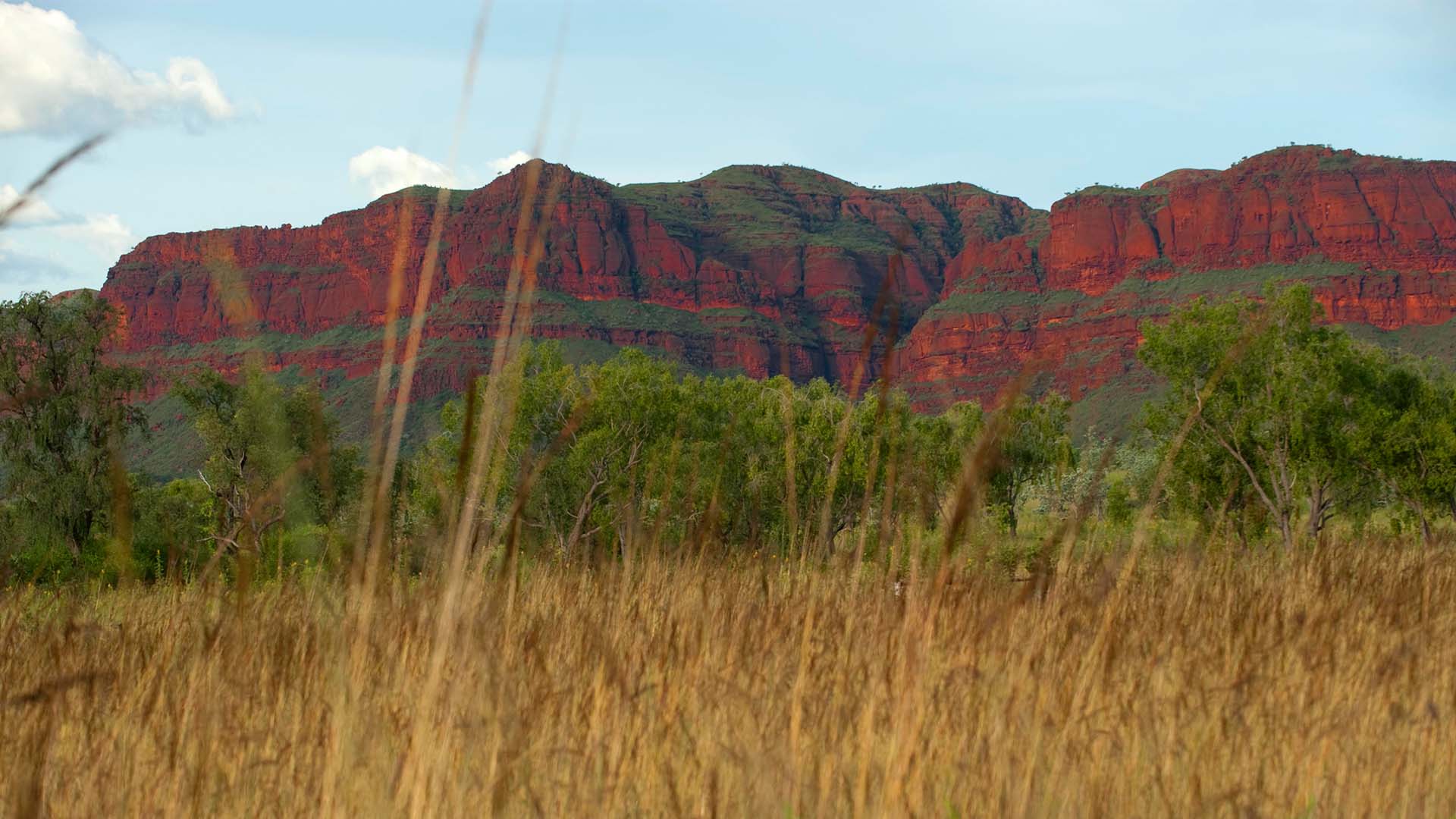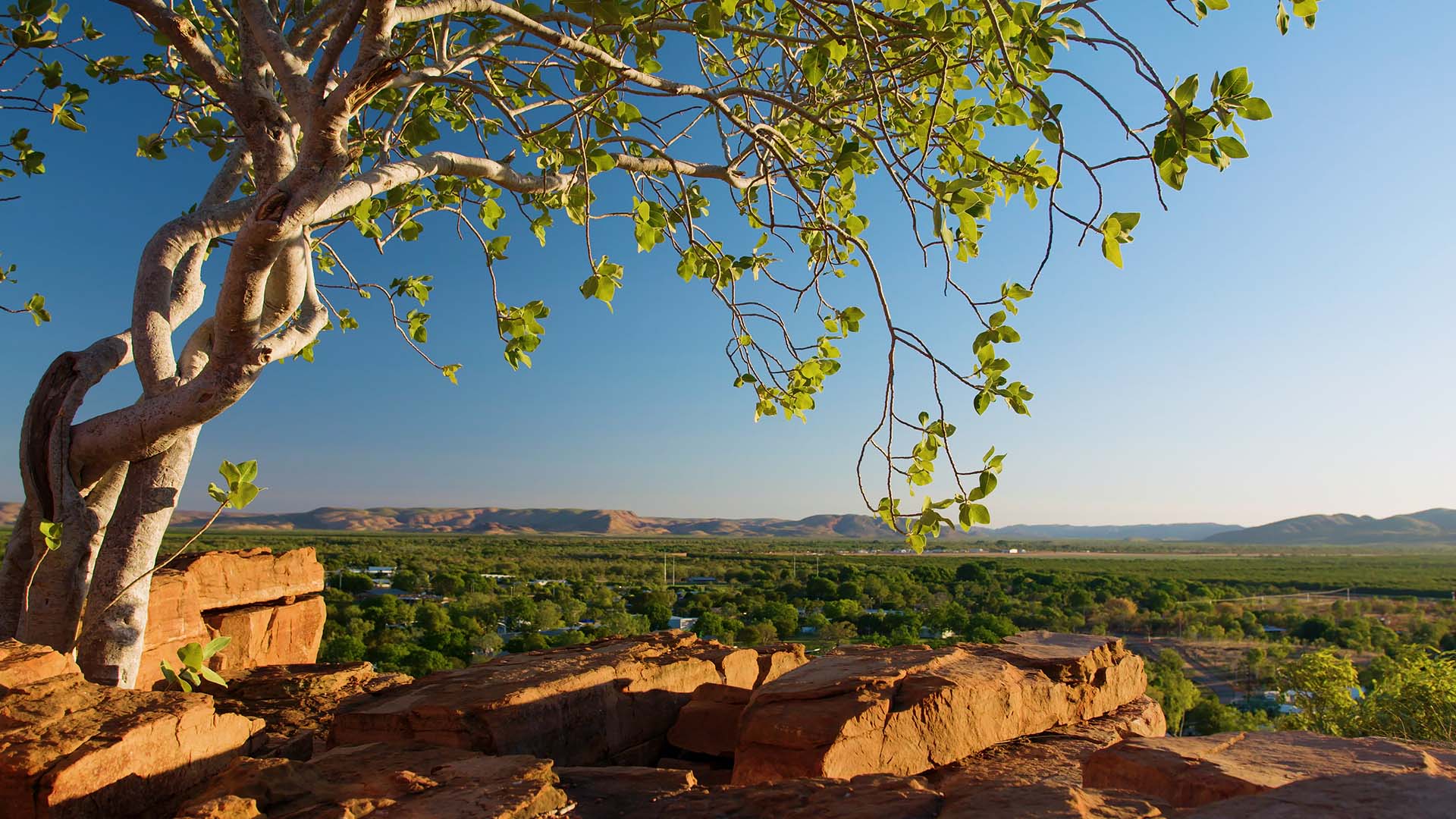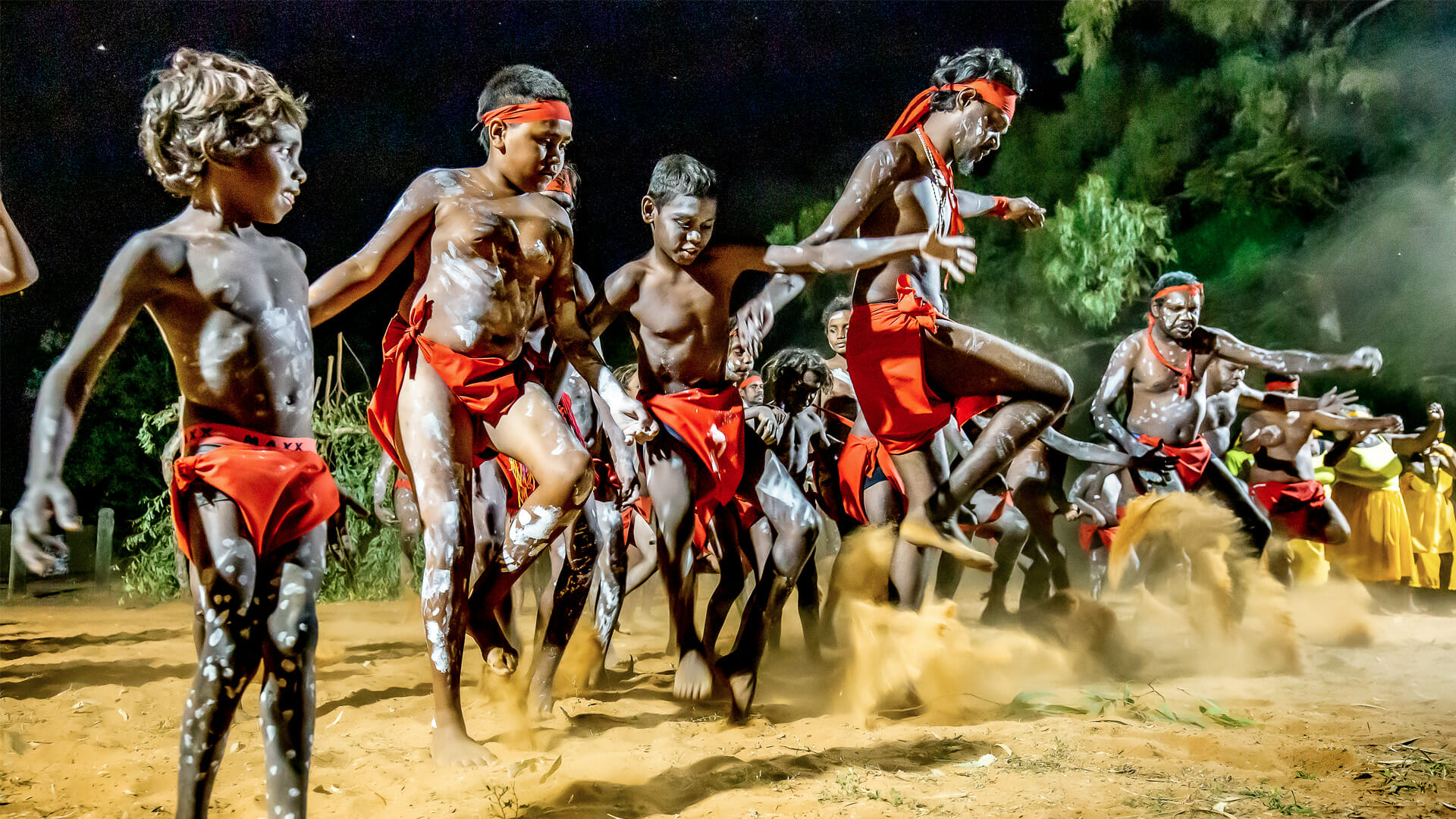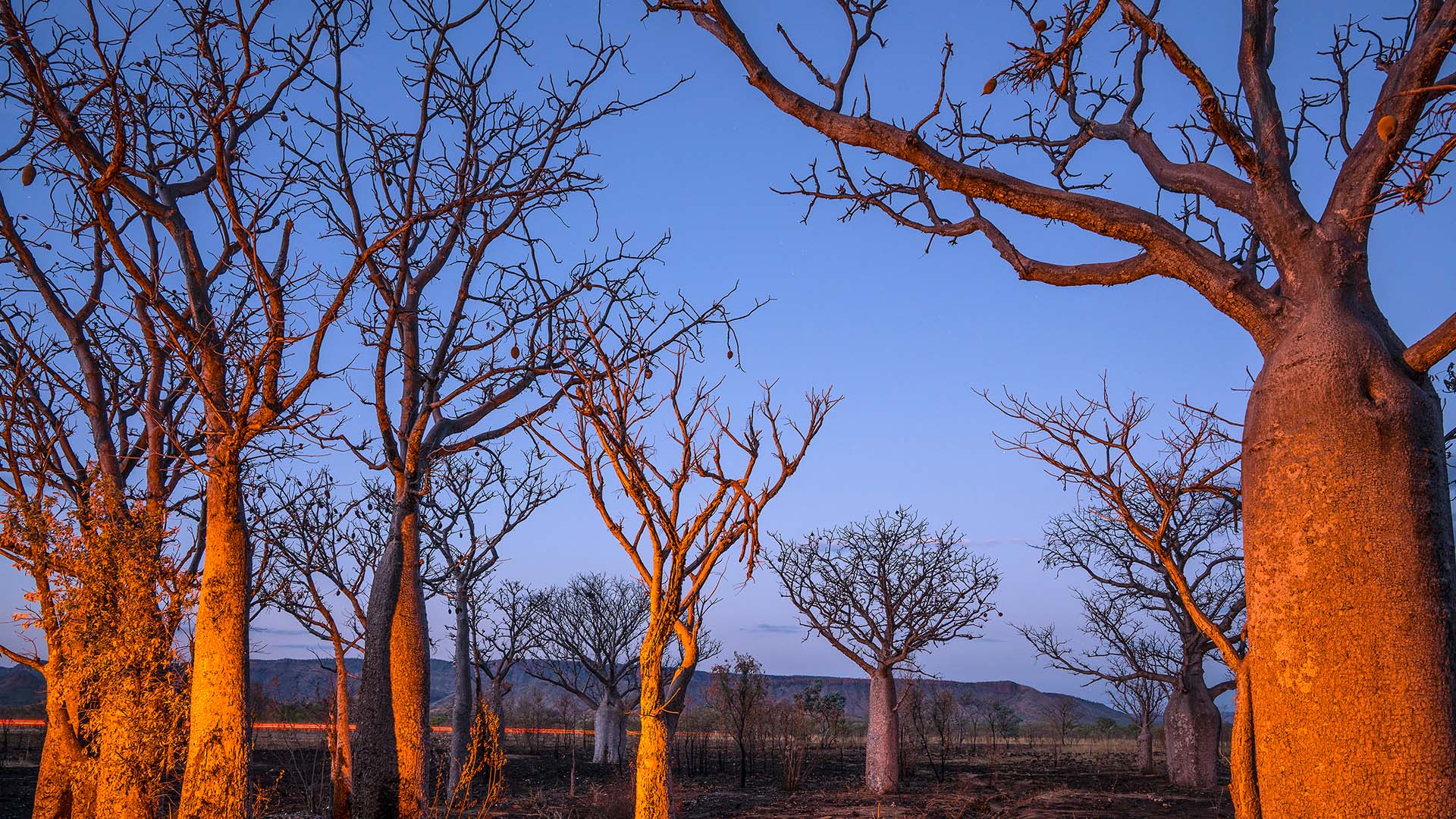Destination Diamonds: Australia’s East Kimberley Region is Home to a Beautiful Wilderness
Australia’s East Kimberley region has it all, including rare pink diamonds, vast horizons, and adventures galore that make it an incredible destination that should be on your bucket list.
The East Kimberley region in Western Australia is the size of Texas, but home to just 36,000 people (29 million live in the Lone Star state). No wonder, then, that this is a destination where nature holds sway, a chance to glimpse a rust-red landscape that’s among the oldest anywhere – the Precambrian rocks evident on the Plateau here are two billion years old. Yet the East Kimberley also seems somehow futuristic, the dramatic contrast between gorges and waterfalls with the empty outback here more resembles an alien planet from a sci-fi movie than anywhere on earth.

Diamonds in Australia’s East Kimberley Region
Diamonds were the main draw for many visitors for some years, those keen to see first-hand the Argyle mine, from which the finest, rarest pink diamonds were retrieved until its closure last year – a gallery on site now acts as a de facto visitors center, operated by the land’s Traditional Owners. There’s so much more to see scattered around this vast wilderness, too, from a UNESCO-endorsed National Park to a gravity-defying set of waterfalls.
Read More: The World’s Last Argyle Pink Diamonds Are Revealed
Kununurra

Kununurra, the closest town to the Argyle, mine celebrates the pink diamonds which brought it the world’s attention. Frauke Bolten-Boshammer’s store on Konkerberry Drive is the best place to buy them, or just head to the aptly named Hoochery, the oldest of WA’s distilleries; it makes a range of local liquors just outside town, including a must-try for any diamond-lover. The Argyle Pink is a native dry pink gin, named after the nearby Lake Argyle, flavored with botanicals that all grow within a short stroll of the site (other than the high-maintenance juniper berry). To explore the indigenous culture of this region, book a guided visit with Ted Hall of Luridgii Tours, a Miriuwung man from Mandangala in North-East Kimberley, and who’s based nearby. He offers a range of group adventures, focused on indigenous culture or nature, but will also happily craft a custom program on demand. A traditional owner of the Argyle Mine’s site, he has offered a tour of the site to help anchor its modern history in the larger tradition and will continue eco-cultural adventures around the area after its closure. These tours are just one example of how diamonds and sustainability go hand in hand in the East Kimberley.
Throughout the closing and rehabilitation process for the Argyle mine, Rio Tinto has worked closely with the Miriuwung and Gidja people, the land’s traditional owners. One post-mining initiative born out of this partnership is a seed collection program that has not only worked to rehabilitate the land, but also created new job opportunities within the indigenous communities, and enhanced biodiversity.
Waringarri Arts Centre

Another great way to learn more about and experience the local culture is to visit the Waringarri Arts Centre, the first fully indigenous-owned arts centre established in Western Australia. They support more than 100 artists, and also hold the annual Corroboree Under the Stars event, which features performances by Miriwoong dancers, film screenings, and art exhibitions.
Lake Argyle and The Ord River

Snake out of Kununurra on a boat along the 55 kilometers of this river and expect a throng of wildlife – look for the jacana, nicknamed the Jesus Bird, for its seeming ability to walk on water (it’s actually fleet-footed enough to skittle between lily pads). Otherwise, it’s a view-filled 40-minute drive through the Carr Boyd Range to reach this manmade lake, created five decades ago when the Ord was damned, and so large at its full supply level that it’s classified as an inland sea. The waters are filled with freshie crocs – around 30,000 – so be careful when it comes to swimming. Better to take a scenic cruise or book a fishing trip with Lake Argyle Cruises: they can help you try to catch one of the smallish population of barramundi here, the delicious but bad tempered fighting fish synonymous with northern Australia. Just brace yourself for a battle when trying to reel them in.
The Buccaneer Archipelago

The 1,000 or so tiny islands dotting the coast here resemble blotches on a Rorschach test – and provoke just as strong a gut reaction: the landscape here is a chance to glimpse rocks that nature has spent two billion years finessing, a patchwork of deep grays and dusky oranges. The easiest way to explore the archipelago’s hidden corners is by boat: book a berth on a Kimberley Quest ship, a luxury houseboat accompanied by an on-call helicopter. The major sight here, of course, is the Horizontal Falls, dubbed one of the world’s greatest natural wonders by David Attenborough. Millions of liters of water trying to squeeze through a pair of tight gorges on McLarty Range, creating a fast-flowing set of rapids reaching four meters in the air that resembles a waterfall flipped on its side. It even changes direction depending on the tidal levels.
Purnululu National Park

The name of this World Heritage Site means ‘sandstone’ in the local Kija language, a nod to the extraordinary rock formations that anchor the Park and which Europeans called the Bungle Bungle Range. Banded with orange and black stripes, they’re like oversized beehives clustered together in the Outback, and best seen from above when you can truly grasp their size; the range spans 450 square kilometers in total. Don’t dismiss the chance to hike through the area, though, noting the plants and animals which flourish in the arid landscape, from emus to budgerigars. The unmissable route on foot is to Echidna Chasm, which is Instagram catnip. Thanks to the shade offered by slow-growing Livistona or Chinese fan palms, and the sun shifting through the sky during the day, the red cliffs shimmer through a palette of colors, no filter needed.
Gibb River Road

If you want a rugged outdoorsy road trip, consider spending a couple weeks tackling this 660km route – just pack plenty of supplies, and tune up your 4WD before you venture out. This road was only finished in the 1960s, intended largely to link cattle ranches, and cuts through a series of spectacular natural sights as it meanders through the north-eastern reaches of the state. There are no crocs living in the swimming holes around Manning Gorge, for example, so you can roam unfettered, and the Drysdale River Station is a still-working cattle ranch that occupies 405,000 hectares here (around as much land as the entire country of Barbados). Its airstrip is the best place to catch a flight to see Mitchell Falls (also known as Punamii-Uunpuu) from the air, a four-tiered wedding cake of a waterfall. Note that the tangled-branch trees that sit roadside are boabs, a local species that’s related to Africa’s baobab – in season, you can even eat the root cooked up in local cafes; it tastes like a carroty water chestnut.
TRAVEL TIPS FOR VISITING DIAMOND DESTINATION: AUSTRALIA’S EAST KIMBERLEY REGION
When is the best time to visit Australia’s East Kimberley Region?
There are two distinctive seasons here, the wet and the dry. The humidity during the former is so intense that much of the region essentially goes on hiatus from November to March. The best time, then, to plan a trip is between May and August, when all attractions will be open and the weather is pleasantly winter warm.
Where should you stay in Australia’s East Kimberley Region?
The Bungle Bungle Wilderness Lodge is right inside the Purnululu Park, offering unfettered access to the trails and countryside here. It has appealing, safari-style accommodation, tented cabins with their own en-suite bathrooms and private front deck; they constructed to leave no permanent footprint on the land. Another example of sustainability being front and center in this region.
The hacienda-like El Questro is one of the few ultra-luxury options deep within the Kimberley, and a hotel that’s logged visits by everyone from Elton John to Kylie Minogue. A visit to this cattle station can be action-packed, biking and hiking through its 300,000 hectares, or just hole up in one of the standalone villas, all glass and wood, that nestle in the landscape just above Chamberlain River. Don’t miss a soak in the natural watering hole, Zebedee Thermal Springs within the El Questro Wilderness Park – a dip in the supposedly fertility-boosting waters apparently helped Nicole Kidman conceive her first child.
Kimberley Coastal Camp is an ideal base for the Buccaneer Archipelago, a luxury lodge limited to just 16 guests hosted by Tub White and his wife Jules. She focuses on food, cooking most of the gourmet meals on a solar powered hob and a wood fire, while he whisks guests off on fishing trips – Jules will prep whatever you can catch for supper – as well as hikes through the outback to see ancient rock art.
